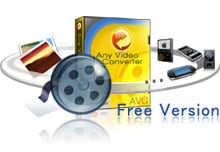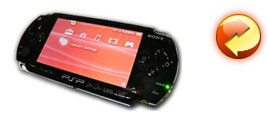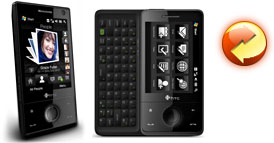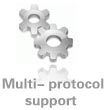If you need to Clone DVD (copy movie DVD to DVD disc), please use Any DVD Cloner. It can clone ANY movie DVDs!

With more than 4,500,000 users in 220 countries/territories
Any Video Converter (free version) is the most renowned free video converter for converting video files between various formats, with fast converting speed and excellent video quality.
Input formats:
avi, asf, mov, rm, rmvb, flv, mkv, mpg, 3gp, m4v, vob, YouTube videos and more
Output formats:
avi, mp4, wmv, flv, MPEG-1 and MPEG-2, mpg (PAL or NTSC), mp3, wma, ogg, aac
Convert avi, mpeg, mov and any video file formats
* Convert or compress video files within minutes of downloading
* Universal video converter supporting all popular formats
* Includes a batch converter to convert thousands of files in on go
Use this video converter software to convert video files into the formats you need to watch on TV, load to a cell phone, put on a website, create a presentation, watch on your portable device and much more. In fact, the possibilities are endless using this powerful video file converter.
"To have your favorite clips how you want them, whether that's on your DVR, iPod, PSP or desktop, you need the right utility to convert theem into the format that works for you. Commercial video converter software's aplenty, but there are several solid free utilities that can convert your video files on every operating system, or if you've just got a web browser and a quick clip. Put DVDs on your iPod, YouTube videos on DVD, or convert any video file with Any Video Converter Freeware, today's top 10 free video rippers, encoders and converters."
-- From Lifehacker.com
Finally we get one free video converter. Any Video Converter Free Version is the popular freeware utility which has millions of satisfied users who enjoy power, speed, and simplicity of this versatile instrument - a rare combination in the world of modern video compression technologies. This Free Video Converter converts almost any video formats to any formats, while preserving the straightforward interface design which makes this program so easy and fun to use.
There is open source software to perform almost every task for video conversion. But if you are one of these windows users who are looking for an All-in-One video converting tool with easy-to-use graphical interface, Any Video Converter provides just that, allowing you to effortlessly convert video files between every format, for FREE!
Any Video Converter Free Version can convert avi, asf, mov, rm, rmvb, flv, mkv, mpg, 3gp, m4v, and vob to avi, wmv, mp4, 3gp, mpg (PAL or NTSC), MPEG-1 and MPEG-2, wmv and flv.
Any Video Converter makes batch file conversion simple. Create a batch list of any different formats and convert them all to a single selected format. The converted files will be saved to a pre-selected directory folder and the original files will remain untouched.
It can convert almost all video formats including DivX, XviD, MOV, rm, rmvb, MPEG, VOB, DVD, WMV, AVI to MPEG-I, MPEG-I, DVD NTSC , DVD PAL, Flash for Video (FLV) ,AVI Video and Customized WMV movie formats. It also supports any user defined video file formats as the output. It has an unmatchable speed and high quality.
Whether you are looking for free PSP video converter, free 3GP video converter, free FLV video converter, free MP4 converter, or free YouTube converter, Any Video Converter Free Version is the right application for you. Download the free video converter now to convert videos and experience better digital life.
Any Video Converter Free Version can also download and convert YouTube videos and Google videos.
How to convert video and transfer it to iPhone

The iPhone is a multimedia smartphone designed by Apple Inc; announced on January 9, 2007. Though lacking of a physical keyboard, iPhone has lots of functions, from universal text messaging, email, to visual voicemail, web browsing, Wi-Fi connectivity, etc, which can be operated via its virtual keyboard. And most important, it's a portable media player. It supports music, audiobook, podcast, application and video. Fun is always with you if an iPhone is in your hands.
So, most iPhone users like to watch movies on this beautiful handset. However, according to iPhone's official page, there are many techinical specifications as follows for iPhone video file:
Video Format: MP4, MOV, M4V
Video Size: up to 640x480
Video Framerate: up to 30fps
Video Bitrate: up to 1.5Mbps for H.264, or 2.5Mbps for MPEG-4
Audio: AAC up to 160Kbps, 48kHz
For this reason, if you have an iPhone and want to play movies on it, you need to convert the video first. Follow below steps to get iPhone playable videos. (If you're using a Mac, please check this Mac tutorial)
How to transfer video to Sony PSP

The PSP (abbreviated form of PlayStation Portable) is a handheld game console manufactured and marketed by Sony Computer Entertainment. It is the first handheld video game console; the current version uses Memory Stick Duo or Duo Pro as its primary storage media, which is more convenient than previous Universal Media Disc and it's able to transfer data between console and computers easily.
Since PSP has a large viewing screen and robust multi-media capabilities, many users like to view videos directly on this device. However, many new PSP owners have no idea how to transfer movies into PSP, or they are not able to locate them in PSP. If you are one of such new PSP users, this article will help.
As referred above, PSP system uses Memory Stick Duo to store games, music, videos, photos and other contents, so its movies shall be saved to Memory Stick Duo for playback. For PSPs with firmware v3.30 or newer, users can transfer MP4 to the VIDEO folder. For older versions, a normal PSP movie should consist of a .MP4 and a .THM file, named as M4Vxxxxx.MP4 and M4Vxxxxx.THM (xxxxx is the same 5 numbers in this pair of playable structure files, and .THM is .MP4's thumbnail file which is not necessary to be transferred into PSP); users should put them in the 100MNV01 folder.
Step 1 : import video into PSP memory card
Connect PSP's Memory Stick Duo card with computer, via PSP or card reader or memory stick adaptor as you like, and the card directory is as below:
Memory Stick Duo root
│
├PSP
│
├MP_ROOT
│ ├100MNV01 (Put .MP4 & .THM files here)
│ ├100ANV01
│ └101ANV01
├MUSIC
├ISO
├PICTURE
└VIDEO (If your firmware is 3.30 or newer, moving MP4 here will be ok)
Step 2 : play converted video on PSP
Once the video is transferred successfully, go to menu VIDEO > Memory Stick, you can find and play the video on PSP now. Great!
How to rip DVD for HTC Touch Diamond

Touch Diamond (P3700), produced by HTC, may be the most beautiful smartphone running Windows Mobile 6 platform, because of its attractive and fantastic design. HTC Touch Diamond and other phones running Windows Mobile, like HTC S1, O2 Atom, Samsung i900, support various video formats such as 3GP, MPEG-4, WMV.
And many people nowadays are likely storing many DVD discs so they can watch them on TV or computer from time to time. How about playing DVD on this mobile device directly? In this way people can avoid getting discs scratched or damaged; moreover, they can enjoy their DVD movies any where they like. However, because of the screen size and the movie sources, they may need to may a ripping or conversion before importing their clips to this beautiful mobile device.
If you are one of such users and want to play DVD movies on HTC Touch Diamond, you need to turn the DVD into a video file first. Follow below steps to get playable videos for your phone.
How to Convert Video for Archos 705 WiFi

Archos 705 WiFi is a portable video player From Archos. It has a gigantic screen and an attractive user interface. Archos 705 WiFi has 2 models in capacity. They are 80GB and 160GB. Archos 705 WiFi supports viewing JPEG, BMP, PNG photos, transfering your photos directly from your digital camera. Archos 705 WiFi also supports playing audio files like Stereo MP3 decoding @ 30-320 Kbits/s CBR & VBR, WMA, Protected WMA, WAV (PCM/ADPCM), with additional plug-ins purchased from Archos' website, Archos 705 WiFi can also play AAC stereo audio files and AC3 stereo audio and 5.1 sound files.
Archos 705 WiFi also support video playback in MPEG-4 (ASP@L5 AVI) and WMV (MP@ML) formats at up to 30 frames per second, with additional plug-ins purchased from Archos' website, Archos 705 WiFi can also play H.264 with AAC sound, or MPEG-2 with stereo AC3 sound.
For more details of specifications of Archos 705 WiFi, please visit Archos official website.
Now let's have a look at how to convert video files for Archos 705 WiFi. First of all, you need a good converter. Any Video Converter Professional is an All-in-One video converting tool with easy-to-use graphical interface, fast converting speed and excellent video quality. It's exactly what you need.
First step, download Any Video Converter Professional from Any Video Converter website and install it.
Launch Any Video Converter Professional. Click Add Video button to add the video files you want to convert for Archos 705 WiFi. Any Video Converter Pro also supports converting online videos like YouTube, Google Video, MetaCafe and Japanese Nico Video. Click YouTube button and paste the URL link of the online video. The converter will download the online videos, in the meanwhile, convert them. The feature makes you can easily watch your favorite online videos on Archos 705 WiFi.
Whether you are looking for free PSP video converter, free 3GP video converter, free FLV video converter, free MP4 converter, or free YouTube converter, Any Video Converter Free Version is the right application for you. Download the free video converter now to convert videos and experience better digital life.
Any Video Converter Free Version can also download and convert YouTube videos and Google videos.





























